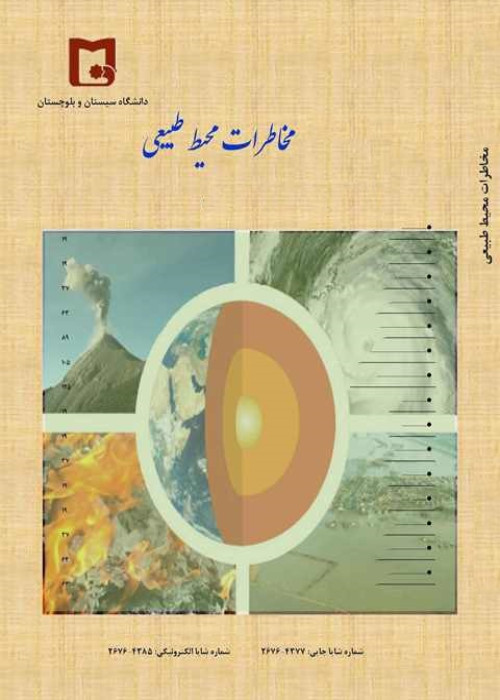Modeling the rate of soil erosion and sediment yield using the RUSLE / SDR model in the Dizgaran watershed
Author(s):
Article Type:
Research/Original Article (دارای رتبه معتبر)
Abstract:
Water soil erosion is one of the most common types of soil degradation, which has very destructive effects on the environment and human life. This phenomenon reduces the quality of the soil in the site and may cause sedimentation problems in the downstream or reservoirs. The severity of soil erosion is usually estimated using different models. The Revised Universal Soil Loss Equation (RUSLE) is the most common soil erosion model due to its simplicity, less need for data, and adaptability to different environmental conditions. Studies around the world show that this experimental model is very efficient for estimating annual soil losses at the watershed scale. Sediment Delivery Ratio (SDR) is used to estimate the rate of sediment yield based on the soil erosion rate obtained from RUSLE. Dizgaran watershed, located on the border of Kurdistan and Kermanshah provinces, western Iran, is one of the mountainous areas of the country and has rough topography, vegetation cover, and weather conditions that make it prone to severe soil erosion. This research aims to estimate the annual average rate of soil erosion and sediment yield in the Dizgaran watershed and also to investigate the correlation between different RUSLE factors and the erosion rate to better understand the effect of each factor on the erosion rate. In this research, the rainfall-runoff erosivity (R) factor was created using the WTLS linear regression method based on the Digital Elevation Model (DEM). According to the results of the RUSLE/SDR model, the average rate of soil erosion was 45.09 tons per hectare per year and the average rate of sediment production was 19.42 tons per hectare per year in the watershed. 1.3% and 4.66% of the area of the area were placed in very low and low erosion classes, respectively. 16.18% of the area was in the moderate erosion class, and 36.18% and 41.68% of the area were in the severe and very severe erosion classes, respectively. Also, the results indicate that the two factors of topography (with a correlation coefficient of 79%) and cover and management (with a correlation coefficient of 47%) have the highest correlation with the soil erosion rate, respectively, and therefore play the most important role in changing the erosion rate in the watershed. The results of this research show that this watershed is involved in severe erosion, as can be seen from the presence of different forms of soil erosion in the field investigation. The results of this research can be used to carry out management measures to reduce the rate of soil erosion in the points with a high rate of erosion and to protect and manage the Dizgaran watershed.
Keywords:
Soil erosion , Sediment yield , RUSLE , SDR , WTLS , Dizgaran watershed
Language:
Persian
Published:
Journal of Natural environment hazards, Volume:13 Issue: 39, 2024
Pages:
1 to 24
magiran.com/p2706944
دانلود و مطالعه متن این مقاله با یکی از روشهای زیر امکان پذیر است:
اشتراک شخصی
با عضویت و پرداخت آنلاین حق اشتراک یکساله به مبلغ 1,390,000ريال میتوانید 70 عنوان مطلب دانلود کنید!
اشتراک سازمانی
به کتابخانه دانشگاه یا محل کار خود پیشنهاد کنید تا اشتراک سازمانی این پایگاه را برای دسترسی نامحدود همه کاربران به متن مطالب تهیه نمایند!
توجه!
- حق عضویت دریافتی صرف حمایت از نشریات عضو و نگهداری، تکمیل و توسعه مگیران میشود.
- پرداخت حق اشتراک و دانلود مقالات اجازه بازنشر آن در سایر رسانههای چاپی و دیجیتال را به کاربر نمیدهد.
In order to view content subscription is required
Personal subscription
Subscribe magiran.com for 70 € euros via PayPal and download 70 articles during a year.
Organization subscription
Please contact us to subscribe your university or library for unlimited access!


